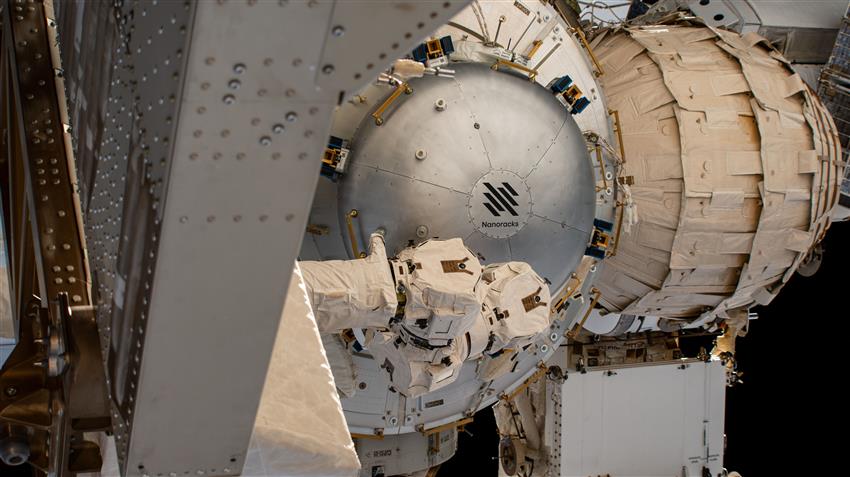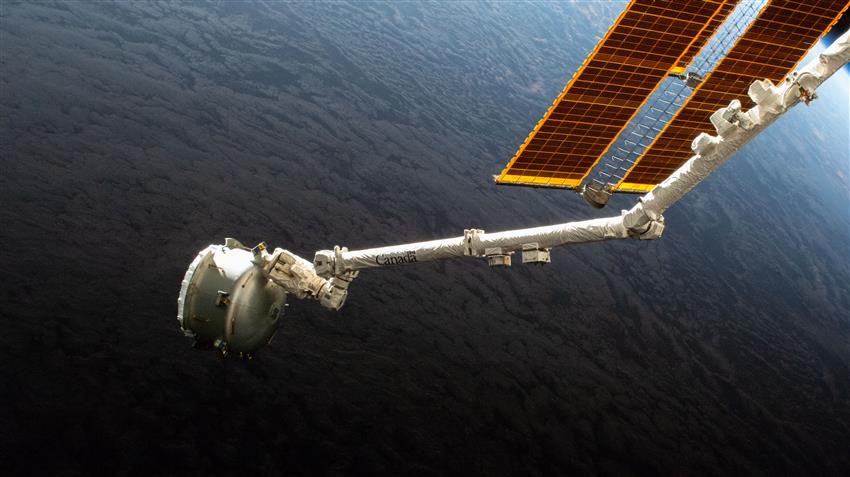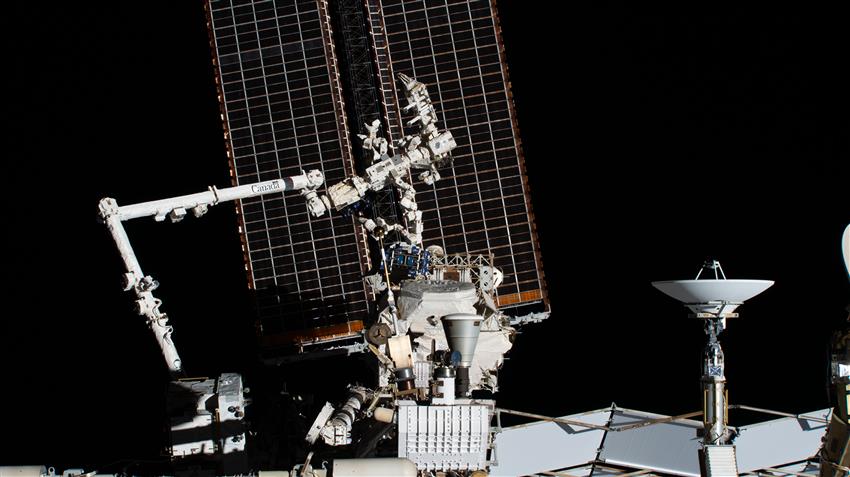Canadarm2: An update from on-orbit
What has Canadarm2 been up to over the past few months? Canada's 17-metre-long robotic arm has been hard at work with visiting vehicles, science, and keeping the International Space Station (ISS) in ship-shape!
In June, Canadarm2 assisted with the release of Cygnus from the ISS. This was the 17th flight of the uncrewed resupply vessel. In addition to delivering supplies and science experiments to the laboratory 400 km above Earth, Cygnus helps with orbital reboosts. The cargo vessel fires its engines to raise or help maintain the altitude of the Space Station.
On , robotics controllers on the ground used Canadarm2 to grip the Nanoracks Airlock, and extend the arm away from the Space Station. After disposal operations, the airlock was returned to the Station's Tranquility module. In addition to disposal, the airlock will be used for science, and can help deploy satellites and test space technologies.

The Nanoracks airlock on the port side of the Tranquility module and grappled by the Canadarm2 robotic arm. (Credit: NASA)
On , SpaceX's Dragon capsule made its 25th resupply mission to the Space Station and docked autonomously the following day. Canadarm2 teamed up with Dextre to unload the unpressurized cargo trunk, removing the Earth Surface Mineral Dust Source Investigation (EMIT) and a battery unit. Designed to map different types of dust, the imaging spectrometer was later installed on the exterior of the Space Station. The battery unit was also installed on an external ISS platform. Canadarm2 then inspected the Dragon capsule before its safe return to Earth.
Towards the end of , Canadarm2 was used to install samples on the Materials International Space Station Experiment (MISSE). MISSE is a series of experiments externally mounted on the ISS and used to investigate how different materials withstand the harsh space environment. The most recent set of experiments tests 3D printed materials, radiation protection biomaterials, thin solar cells and paraffin wax thermal protection.
Back on Earth, all these operations were run from the Robotics Mission Control Centre located at CSA headquarters. Operations can also be conducted from Houston or by astronauts on the Station.
At the end of , a spare joint for Canadarm2 was moved closer to the centre of the ISS, making it easier to access for future repair missions.
Canadarm2 has a busy fall ahead with several resupply missions and solar array installations. The Cygnus cargo vessel will be captured, berthed, unberthed and released by Canadarm2. The SpX-26 mission will carry rolled-up solar arrays, and when astronauts install them during spacewalks, they will rely on Canadarm2 for support. Stay tuned for the upcoming cosmic catch, vessel inspections and more!


